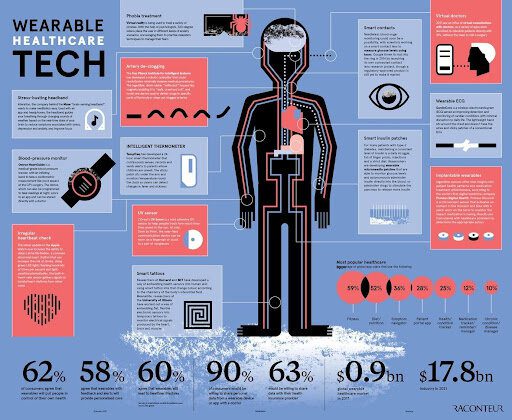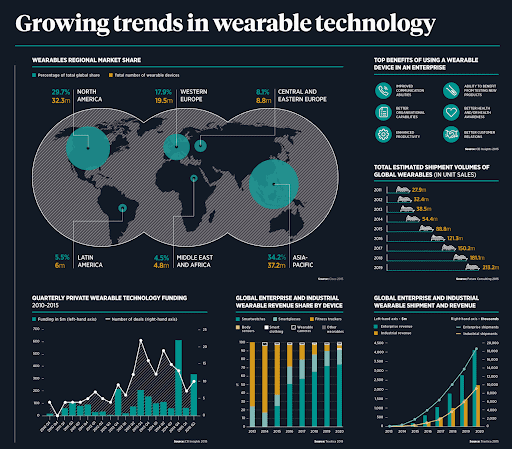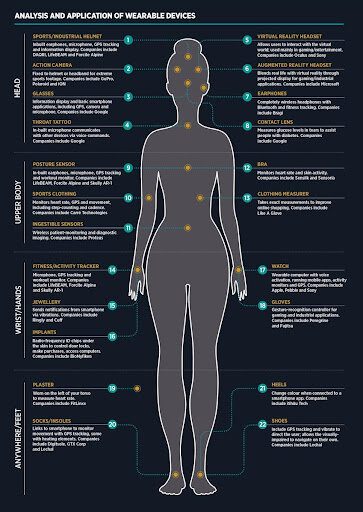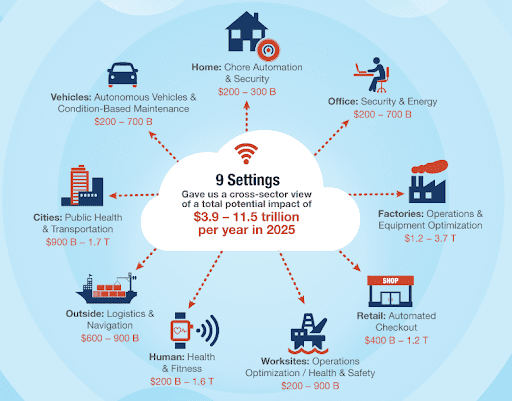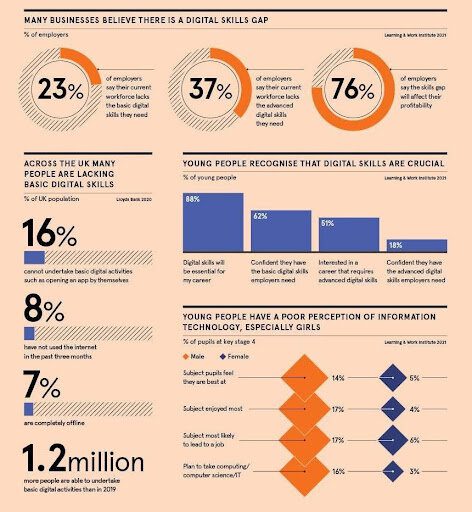blog Innovation | 14min Read
Published on September 14, 2021
What is Health Wearable Tech?
- Post author By tbrg
- Post date September 14, 2021
- No Comments on What is Health Wearable Tech?

Think Fitbits and Apple watches. That in a nutshell is what wearable tech is all about. That’s it. End of blog. Just go back to your iPhones and be happy that you know what wearable tech is.
But, if you want to explore the rabbit hole a bit deeper, read on.
Yes, an apple watch is the easiest example of wearable devices in healthcare. But when you go beyond it, you understand that it’s just the tip of the iceberg. Even if you choose not to think about it, you can figure out everything from just the name – it’s technology that you wear which allows you to keep a track of your health. Now take this definition and expand it to other concepts. If you had an electronic neck brace that tracks the position of your muscles, would it be considered as wearable tech? If you wore a face mask that gave you real-time information on the pollution levels around you, would that be considered wearable tech?
Yes, it would.
We are on the cusp of a health revolution that will be led by technology. Your machine is going to become your best friend, and it doesn’t mean that you’re going to be hooked up to your phone. It means that your body will eventually be covered in sensors and wearable technology in healthcare that will give you hospital level data. Let’s explore what that means.
The Future
When we talk about sensors and devices that can give us real time information, we’re talking about the concept of Internet of Things (IoT). The last major change that we experienced was the introduction of the internet and touch screen mobiles, this is about to be the next step in our evolution.
IoT basically means a network of ‘things’ that are connected across the world, to share information and feedback between each other. At the moment, you can take phones as an example of IoT devices, considering them as the building blocks of this concept. They’re connected across the world and build a network that talks to each other. Now combine this with technology attached to your body, and that creates its own network with the goal of managing your health.
Take a potential scenario, where Bio-sensors exist as wearable adhesive patches that can collect data on movement, heart rate, respiratory rate, temperature, etc. Imagine an Apple watch but in the form of a small sticker. This is connected to the net and gives real time information to medical professionals. So imagine if an elderly person was wearing this sensor, and developed a change in his heart beat. This data would be recorded in real time and the emergency services would be automatically alerted. He might not even know that his heartbeat has changed, but this patch could directly connect all the missing pieces within a network of information, to potentially save his life. That’s how IoT will work in wearable tech.
Similarly, there are forms of engineering robotics technology that are being developed or implemented within IoT. This gives us a taste of what wearable tech is moving towards:
Sweat sensors that can tell an athlete that her body has lost water and electrolytes, so she must replenish.
Safety IoT wearables that send out an alert to your loved ones and the police at the touch of a button, allowing GPS to pinpoint your exact location.
Portable and wearable Dialysis machines are being researched in Singapore as we speak, so patients don’t need to go to the hospital every 2 days.
Smart clothing, such as the Neviano swimsuit, tells you if the UV rays are too harsh and whether you need more sunblock.
If nothing else, think about prosthetics and exoskeletons. In the Marvel universe, when Colonel Rhodes falls and damages his spine, Tony Stark creates an exo-suit to help him walk. This can seem like pure fiction but real people with paralysis could actually use these suits, and research in robotics courses is being done for the same. Exo-suits are currently being developed in various countries to help bring mobility to people suffering from disability, especially wounded soldiers. This evolution of technology is being fuelled by the minds of younger innovators who see an answer to various needs.
“But I Don’t Like Technology That Much.”
The old school concepts of technology and robotics are changing. With a focus on grades and mugging up, students these days are made to believe that there is only a small subset of highly intelligent kids who would be interested in exploring this field. But this form of thinking defeats the entire intention of ‘learning’. Creating, which is the basis of technology, starts with experimenting and not just cramming up some answers for your exams.
Nobody expects you to write thousands of lines of code within engineering robotics. You first need to come up with a solution to the problem in front of you. To think like a designer and not just solve problems that already have an existing answer. We aren’t talking about creating a new version of Instagram in a robotics workshop.
A True Creative Mind Tries To Find Answers To A Problem That Seems Beyond Their Capabilities, Something Which Has Even Perplexed Others Before.
Take the iPod for example. Steve Jobs saw people carrying cassette and CD players. You also had to carry extra cassettes or CDs along with you. He decided that this was a waste – Why carry so much stuff around? So he came up with the concept of the iPod. Carry 1000 songs in just one device. He married the concepts of art and design, with a little help from technology. And the rest is history.
Art and Technology will always go hand in hand. Anybody who says otherwise, does not understand either of them. You can’t design or create something if you don’t have an interest to explore – To explore sideways, to go beyond the books, and to fail at it.
But First You Need To Fail.
The one thing that we aren’t taught enough is to fail. Failure is looked upon as the end of your existence. But any technologist will always look at failure as just the starting point. You cannot create anything without failing first.
Working on technology or robotics, teaches you to accept the concept of an iterative process. It incorporates a feedback loop to whatever you create, because you can’t build anything without making mistakes.
Sometimes We Feel Like Quitting Just Because We Receive Feedback Or Believe That Things Aren’t Working Out.
But the process of building any technology teaches you to learn from this critique and make even more mistakes. Some creators get worried if there are no mistakes as they just can’t believe such a scenario exists.
This repetitive process ensures that you become comfortable with multiple rounds of work, as most people today have lost the patience that comes with such a venture. And this is not about getting that final product out of a robotics workshop.
Robotics Forces You To Think Of An Idea That Will Help You Get To The Next Step.
If you’re stuck, it’s easy to wait for somebody else to help you out. But this process allows you to unearth a new method or a new idea that can help you get to your final destination. That is the true essence of a robotics workshop, which can open up your mind to solving bigger problems in the world.
What Are The Concerns That Need Solving?
Whatever you think needs solving.
If you think that something is a concern, you can try to find a solution for it. Especially when it comes to wearable medical devices. But let us explore some of the larger trends that we are witnessing in the wearable health field.
1. Disability and Prosthetics
Solutions to counter Disabilities and the use of Prosthetics is a major focus going forward. Smart prosthetics are being developed that use brain implants to move your limbs as if connected to your nervous system. Elon Musk is developing the Neuralink brain implants to potentially help people overcome severe brain injuries. This has massive potential for people suffering from Alzheimer as well.
2. Sports and exercise
High performance sports, which have millions and billions of dollars riding on it, requires enhanced data which is collected on a real time basis. This allows coaches and trainers to help improve the efficiency of a player, to extract every effort. This will help in minimising injuries and increasing the lifespan of a player’s career. Sensors and trackers are even being used by the NFL to minimise the damage to a player due to head contact.
3. Improvement in productivity
Just as in sports, companies want their employees to work at higher productivity levels. This increases their profitability and is working towards an efficient use of their employee’s time. This could be in the form of eye-trackers which tell the employee that they need a 5-minute break, or it could be a posture correction device to allow the employees to sit longer. Offices are realising that it isn’t about overworking their employees, it’s about finding the right balance.
4. Elderly care and Assisted living
A large amount of time and effort is spent in taking care of the elderly. Integrating sensors and IoT devices can reduce human intervention until necessary, leading to an optimisation of healthcare clinics. In addition, devices are being created that can help in assisted living, which allows a form of independence to those who need support. Like the spoon built on the concept of a camera stabiliser, for people suffering from cerebral palsy. This stabilises the surface and allows them to eat in spite of their shaking hands. Another device would be a wheelchair that climbs stairs, which is already in production.
5. Art
Not everything needs to be about problems and solutions. What if an artist wants you to create a wearable art installation? To create this, you employ the same method that you would use for creating a health wearable device, but with a different outcome. Art installations can be interactive or static, it’s more about the messaging behind the artist. It could even be in the form of engineering new materials. The limits to your thoughts are only those that you set for yourself in engineering robotics.
6. Emergency services
People don’t realise that the use of wearable technology in emergency services could actually save lives. There is a device that has been created which replicates the motion of CPR. It is meant to simulate the pumping of blood through your heart. This device, when wrapped onto the chest, allows for the pumping action to continue while the patient is being transported to the hospital. Usually it’s an ambulance attendant who is doing this physically. These small devices can radically change how we look at healthcare.
The diet and nutritional industries are exploding due to the high consumer interest in what you put inside your body. Devices are being developed that can scan the food that you’re buying and give you real time information about the nutritional content. This allows you to keep an active control on your food intake. There is another device that has been created for people with Gluten allergy, that automatically tells them if their restaurant meal contains any Gluten.
The line, for wearable devices in healthcare, is no longer drawn at Fitness trackers. It is estimated that 30% of these trackers are returned. This implies that in the future, sensors and wearable technology in healthcare will only cater to specific demands. If you need it, only then will you buy it. What’s in fashion will not be applicable much longer.
Thus, the ‘why’ becomes very important. If a client with a disability is waiting on you to create something that could change their life, you aren’t going to just waste time. The focus and energy that you would bring to that effort is something that even you wouldn’t be able to recognise. With the pressure of delivering a finished product on a deadline, you begin to understand the challenges that would come up.
But Why Do This In School? Will It Help Me With Colleges?
You’re just not taught something like this in schools. Nobody is running robotics courses for kids. A majority of the schools want your head buried in books and will judge you solely based on your exam scores. If you score well, go for the STEM fields. If you score low, you should look at Arts. These concepts are vintage and need to be stored in a museum. If exams are all about passing, and technology is all about failing, where is the connection?
When you go beyond the idea that building things is ‘better left for arts and crafts’, you realise the benefits of a robotics program.
Teamwork is the basis for any learning. This concept is best illustrated when you work on a larger project for wearable health tech with multiple people, and sometimes even multiple teams. Even a table needs at least three legs to stand.
Book knowledge – Relying on bookish knowledge is outdated. Unless you try to pick up a skill through an application-based learning, you are bound to let it slip from your mind. Muscle memory exists for a reason.
Future skills – You are literally picking up skills that are meant for the future. The next few decades are going to be built on technology and it is vital that you at least have some amount of skills that can fit into this world.
Fun – You can’t get bored in a robotics program. When you’re building stuff that nobody has ever seen, it’s just enjoyable. You aren’t sitting and staring at a blackboard or a textbook. Your mind is being used to create instead.
Creative thinking – These programs allow for lateral thinking. You aren’t just moving in a direction that is told to you, and this allows for the development of a creative mind. Even if you want to become a successful businessman, you need to be creative in business. You don’t need to be a painter to be creative.
Experimentation – There is no other place that you’re encouraged to experiment and make mistakes. Even if you go to art class, the teachers are generally strict about lines, colours and tones. This allows you to be freer in your exploration.
Simplifies a complex technology – For most people robotics and tech seems way too complicated for their ‘level’. But if you are exposed to it at a younger age, you don’t grow up thinking of it as a complex subject. It’s more relatable and not a mystical field anymore.
Achieving something – When you see your idea and hard work coming into existence, it shows you how to achieve something practically. You might have hopes and dreams, but do you know how to achieve them?
And if not for the fun of it, maybe do it for the schools. Doing wearable technology courses which create actual wearable medical devices, will set you apart instantly. Ask any ivy league mentor and they will tell you the same. This can be a major boost for your profile.
The students who come out of Nuvu work with clients, industry professionals, artists, museums, performers, and galleries. They bring their critical and lateral thinking to the colleges that they enter. Some of the courses that students have explored are:
Bachelor of Science Arts, Technology and the Business of Innovation at USC Jimmy Iovine and Andre Young Academy
Master of Arts in Design Engineering as a Dual degree at Brown University and Rhode Island School of Design
Bachelor of Computer Science and Arts (BCSA) at Carnegie Mellon University
Integrative Design, Arts and Technology Network (IDeATe) at Carnegie Mellon University
Design and Technology BFA program at Parsons School of Design
Civil and Environmental Engineering at MIT
Industrial Design (ID), BFA at Rhode Island School of Design
What Is The Process Of Learning In Such Workshops?
Why can’t we turn schools into a playground? That is the concept behind any robotics workshop, and one you might want to consider exploring. We live in an attention deficit economy and there is always something vying for our attention. A fun robotics workshop for school students can change the level of focus one brings to the table. Fact is that when you’re printing your own tool with a 3D printer, you’re not going to pull out your phone to scroll on Instagram.
A typical workshop with Nuvu works in the following way:
A problem is presented to the students.
You learn about the problem and the shortcomings. What is the issue at play?
You brainstorm and come up with ideas that can be implemented.
A feedback loop is started with experts, who poke holes in your ideas.
You relook and rethink your ideas. You present them again.
Your teachers and experts will again try to push your idea. You will learn to accept the concerns, or learn to push back when you think your idea is worthwhile.
Along with the teachers, you will create your idea and bring it to life.
You test it. What’s the point in creating something with your hands, if you can’t test it?
And you finally enjoy the satisfaction of seeing your thoughts come to fruition in real life.
Nuvu has a unique workshop methodology, where the focus is on:
Collaboration – When you build something together with others, that is when you learn teamwork.
Critical thinking – There is no failure unless you stop thinking. Every ‘failure’ is just a stepping stone to success.
Learning to empower your ideas – You learn to reject fear and doubt, to immerse yourself in the process of creation.
To start from a design – You can’t create something without designing it first.
A workshop is a taster for what’s in store for you in life. The future of our world is going to be a confluence between art and technology. That is something you can’t deny, so why deny yourself the opportunity to dive into it? Find things around you that are a combination of design and technology, to explore why you would love to get involved with something like this.
Share in the comments below, what you think is a problem today and what you would like to create to solve it.
Big Red Education and our Ivy Early Entrepreneur Program
In our entrepreneurial workshop – Ivy Early Entrepreneur, students go through the process of business development and leave the entrepreneur program having completed a business model canvas, competitive analysis, financial model, minimum viable product, and a pitch deck.
Students get an opportunity to learn from successful entrepreneurs who are alumni of reputed universities and are experts in their respective industries.
These experts serve as coaches guiding students through the processes of developing a business concept. Risk-Taking, Decision Making, Critical Thinking, Problem Solving, Communication &
Storytelling, Design Thinking & Innovation, and Opportunity Recognition are a few of the key learning areas of our program.
On successfully completing the entrepreneur workshop, the guaranteed internship will be extended to all the students within our partner firms and with most of the mentors teaching the program. Students will be provided with a certificate of participation by Big Red Education. This certificate can be used for your college portfolio.
Ivy Early Entrepreneur
 11th – 17th Jan 2022
11th – 17th Jan 2022
Idea Generation | Market Research | Design Thinking | Pitching




